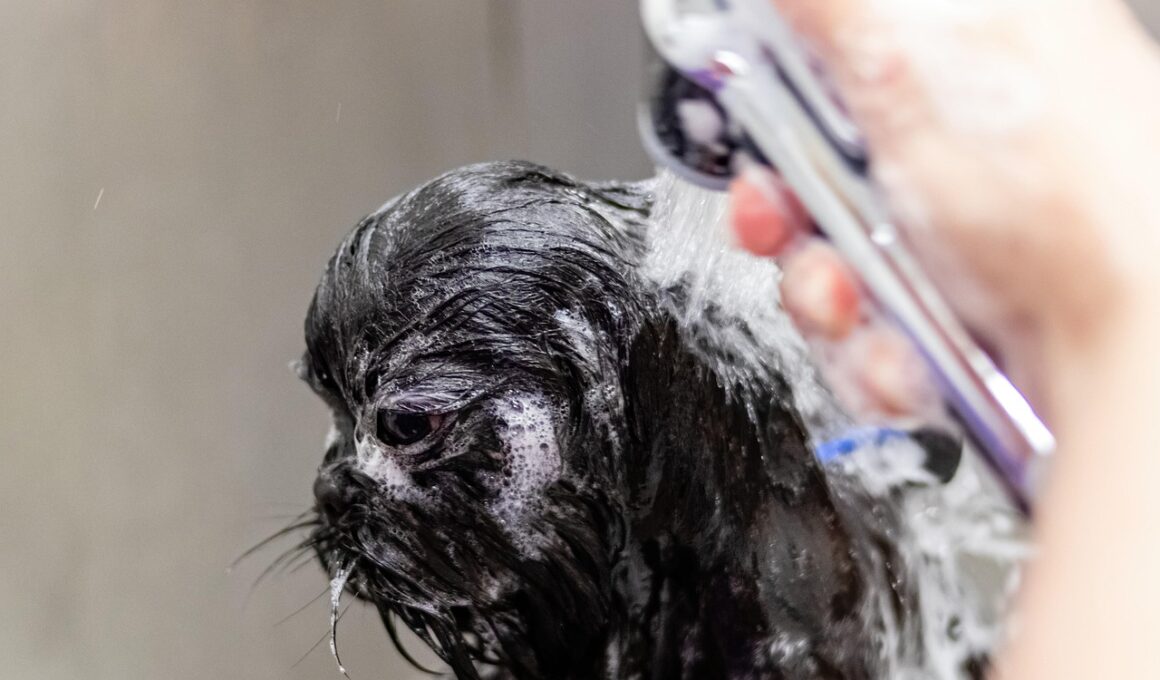How to Start Puppy Hair Care Early and Make It Enjoyable
Starting puppy hair care early is paramount for developing a positive grooming routine. Your puppy’s first grooming experiences will significantly influence their comfort level and cooperation in the future. Introduce grooming tools as fun toys to foster a sense of curiosity. Use soft brushes and gentle combs that won’t hurt their delicate skin. During initial introductions, allow your puppy to sniff and play with the tools. This familiarization can minimize anxiety associated with grooming sessions later. Keep sessions short to avoid overwhelming your puppy. If your puppy shows signs of stress, it’s best to take a break and try again later. Incorporate toys or treats during grooming to create an enjoyable experience. This will help your puppy associate grooming with rewards and fun, making future sessions more manageable. Regularly check your puppy’s ears, paws, and tail for tangles or matting. Consistency in your grooming schedule is essential, aiming to establish a daily routine that is as much about bonding as it is about hair care. Remember, starting early helps in building trust and a cooperative relationship with your furry friend.
Grooming different breeds requires tailored techniques, as each puppy’s coat is unique. Short-haired puppies like Beagles usually need less grooming compared to long-haired breeds like Shih Tzus. For short-haired puppies, a simple brush or rub with a grooming mitt can effectively keep them clean and shiny. Conversely, long-haired breeds require thorough combing and brushing to prevent tangles and matts. Regular brushing will also distribute natural oils throughout their coat, giving them a healthy appearance. Consider the specific grooming needs of your puppy’s breed and consult a professional groomer if necessary. They can offer advice on the best tools and techniques suited to your puppy’s coat type. Always reward your puppy after grooming sessions, regardless of their temperament during the process. Treats can also be used as incentives to get them accustomed to specific grooming tools or techniques. Aim for positive reinforcement throughout the grooming process. Regular grooming helps familiarize your puppy with being handled, and this will make vet visits easier in the long run. Ensure that the grooming environment is cozy and quiet, as this reduces distractions and promotes a calming atmosphere.
Establishing a Routine for Puppy Hair Care
Establishing a consistent routine is essential for efficient puppy hair care. Grooming should occur at the same time every day or week as dogs thrive on routine. By keeping this consistent, your puppy will anticipate grooming sessions rather than fear them. Morning or evening, find a time that works best for both you and your puppy. Early morning sessions can help start the day on a positive note, while evening sessions may provide calming benefits after an active day. Ensure that you have a comfortable space, such as a designated grooming area with limited distractions. This will help your puppy feel secure and relaxed. Always keep grooming supplies organized and within reach to maintain a stress-free environment. As your puppy matures, adapt your grooming routine to fit their changing needs. During bath time, make sure temperature is comfortable, as puppies are sensitive to hot water. Be gentle while bathing and use puppy-specific shampoo that is safe for their developing skin. Frequent short sessions will yield more engaged grooming than lengthy sessions filled with frustration or anxiety.
Grooming your puppy isn’t just about hair; it’s also a great opportunity for bonding between you and your pup. Spend time cuddling and interacting in between grooming techniques for a more emotionally secure puppy. Share special pets, cuddles, and brushing sessions to encourage relaxation and happiness. Puppies often get anxious during grooming, therefore eliminating stress can enhance the experience. Speak soothingly and maintain a calm demeanor to set the mood. If your puppy ties negative associations with grooming, it may lead to behavioral issues. Teach them that grooming can be enjoyable by incorporating fun elements. Use toys to distract them during brushing, or engage them with light play before or after stiff grooming sessions. You can also consider using calming sprays that promote relaxation. Regular grooming contributes toward your puppy’s overall health, as good hygiene leads to fewer skin issues or infections. Be vigilant for changes in behavior or skin conditions. Any irregular changes may require veterinary advice or intervention.
Utilizing Professional Grooming Services
Although it’s beneficial to perform at-home grooming, you might need to consider professional services for more complex grooming requirements. Professional groomers possess extensive training and understanding of specific breeds, equipping them with skills to care for their unique coat needs. They can manage tough tangles and matts more efficiently, thus saving you time and frustration. If you’re unsure about attempting certain grooming techniques, a visit to a groomer can provide you with valuable insights and techniques. Besides coat grooming, many offer additional services like nail trimming and ear cleaning. Regular appointments in the early days will teach your puppy how to behave during grooming sessions. Moreover, the groomer can help normalize the experience by exposing your puppy to various tools and practices in a positive manner. Remember to choose a reputable groomer known for treating pets kindly and professionally. It’s essential to observe how your puppy reacts to grooming appointments. If they show signs of distress, be open to switching services. As your puppy becomes accustomed to grooming visits, they should show less anxiety and more eagerness to be styled and pampered.
Maintaining a clean and tidy grooming area is essential for the health and safety of your puppy. Regularly clean the area to remove any hair, dirt, or other detritus that can make the grooming experience less pleasant. Use surfaces that are easy to clean and can easily manage water and excess hair. Creating a grooming station with an elevated area can make the process more comfortable for both you and your puppy. This allows for better access to their coat and is more suitable for bathing sessions. Make sure that tools like brushes and scissors are sanitized and easily reachable. Avoid using the same instruments for different puppies unless properly cleaned, as this can lead to the spread of parasites. Providing a non-slip mat can help your puppy to feel stable while being groomed, thereby increasing comfort and safety. Be sure to have fresh water nearby for breaks, especially in hot weather. A clean environment ensures that grooming remains a pleasurable and anxiety-free experience for your puppy, equipping them with positive memories tied to being pampered and styled.
Addressing Grooming Challenges
Puppy grooming can present challenges that require patience and persistence. For instance, some puppies are fidgety or anxious during grooming sessions. If you encounter such problems, consider breaking the grooming process into small, manageable segments. Focus first on desensitizing your puppy to the tools, letting them get comfortable with one specific item each session. Before attempting to groom, try simply rewarding your puppy for being calm next to the tools. If their reaction is too intense, it may be beneficial to start from a distance, gradually moving closer as they adjust. As you work through challenges, remain consistent and patient, rewarding progress with treats. If your puppy remains resistant, consider using calming aids, such as relaxing music or aromatherapy. Additionally, take brief breaks to ensure they remain relaxed throughout the process. Explore the idea of using grooming aids, such as puppy-specific gentle deshedding tools. These can make the process easier and more enjoyable. Remember, overcoming grooming challenges can build your puppy’s confidence and ultimately foster a stronger bond between you and your furry friend.
Moreover, recognizing the right frequency for grooming is crucial to your puppy’s well-being, depending on their coat type and lifestyle. Active puppies that play outdoors may require more frequent grooming due to dirt and debris accumulation. Meanwhile, puppies with shorter coats might need less attention. Typically, long-haired breeds will require grooming every day, while short-haired breeds may be groomed weekly. Watching for signs of matting will help determine the ideal frequency for your puppy’s specific needs. A clean and well-groomed puppy is often a happier puppy. Pay close attention to your puppy’s body language during grooming sessions. If they seem uncomfortable or frightened, adjust your approach accordingly. Ultimately, grooming should be positive for both you and your puppy, fostering a trusting relationship as you take care of them. Be adaptable in your techniques and tools, trying out different brushes or grooming methods until you find what suits your puppy best. Also, integrate baths into your grooming routine to keep your puppy clean and healthy. Explore eco-friendly grooming products that will be gentle on your puppy’s skin while remaining effective. By paying attention to these details, you can ensure a sustainable and enjoyable hair care routine for your new companion.


